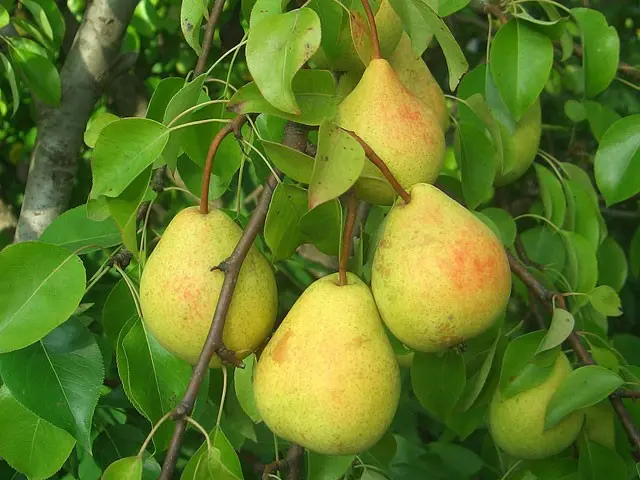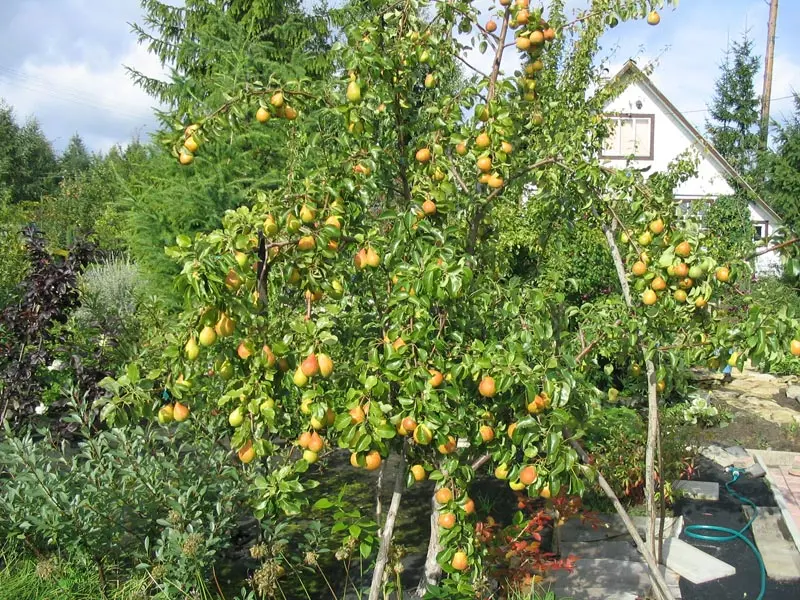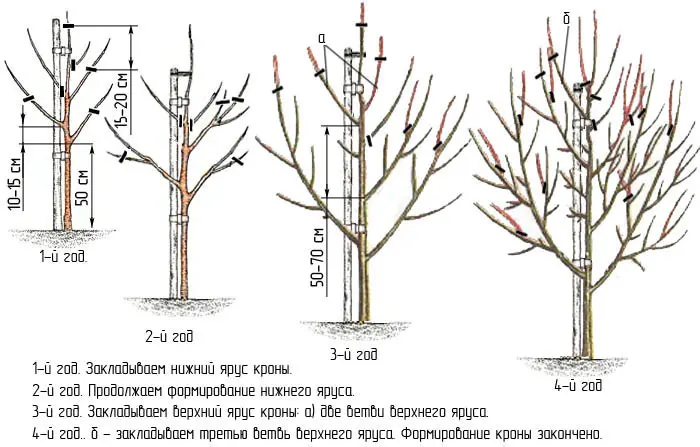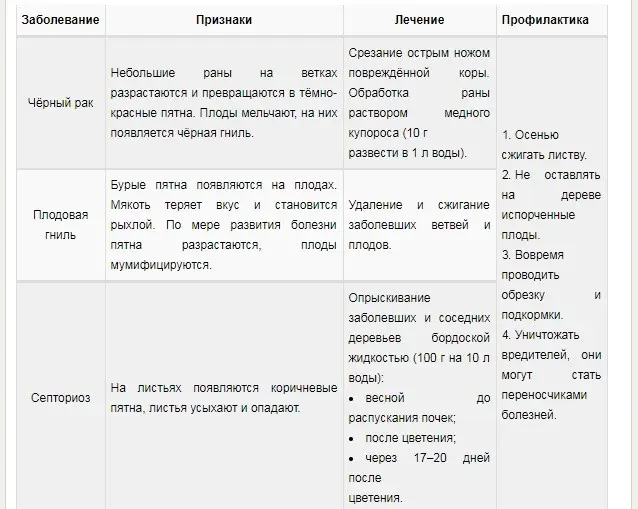Contents
Habitual “native” fruits cause us persistent visual and taste associations. And if an apple is associated with a blush and a refreshing taste, then a pear is associated with sweetness and a warm yellow tone. Pear Veles has a lot of advantages, it is worth it to take pride of place in your garden.
The history of the emergence of the variety Veles
The pear appeared as a result of crossing two wonderful varieties – Venus and Forest Beauty.
The forest beauty is the base of many excellent varieties, from which the culture inherits winter hardiness, a high degree of productivity and tasty fruits. No less important qualities – productivity and unpretentiousness of cultivation – Veles inherited from Venus.

Yu. A. Petrov and N. V. Efimova from the All- Breeding and Technological Institute of Horticulture and Nursery worked on the selection of the variety. The culture was registered in the State Register of Breeding Achievements of the Federation in 2001. Recommended regions for growing – Moscow region and central regions.
Characteristics and description of the winter-hardy variety
Already from the photo of the tree and fruits, you can see that the pear gets rave reviews for good reason. At exhibitions, the fruits of Velesa usually receive the highest scores.
botanical portrait
A medium-sized tree with a spreading, well-leafy crown reaches its maximum height by about 10 years. You can rarely meet Veles above 4 m. The shape of the crown is broad-pyramidal, over time, even vertically growing shoots droop. Branches of cherry-brown color with rather large annelids.
The leaves are oblong, medium in size, with a glossy facial structure. Color – from bright to deep green. The leaf is slightly bent to the inside, along the edges you can see a slight serration.

The fruits are considered medium-large, the usual weight is from 120 to 170 g. Less common are specimens weighing about 200 g. The shape is correct, wide pear-shaped, slightly oblique, but without ribbing. The skin of the fruit is even, smooth and clean, greenish-yellow in color, with a slight reddish coating.
The fruits of Veles are of the dessert type and are not inferior to good southern varieties. The pulp is juicy, medium density, with a semi-oily structure. The aroma and taste are very delicate, sour-sweet.
Drought and frost resistance
When growing Velesa in the central regions, additional watering is not required – the pear has enough natural precipitation.
If precipitation is rare, it is necessary to water an adult tree at least 2 times a month. Young – more often.
Author’s advice
Velesa does not tolerate drought, which immediately affects the quality and quantity of fruits.
In terms of winter hardiness, the variety can be compared with the old frost-resistant varieties. It is able to withstand frost down to -35 ° C. However, late spring frosts below -2 °C can damage the buds.
Pollinators varieties
The hybrid is partly self-fertile. However, to improve the quality of the fruit and the degree of yield, it is necessary to take care of suitable pollinators. Varieties such as Rogneda, Chizhovskaya and Severyanka are perfect. In some sources, the partial self-fertility of the variety is not mentioned.
Terms of maturation and fruiting
The variety does not differ in early maturity, the first fruits appear no earlier than 5 years after planting, and even later. Fruit ripening occurs at the beginning of autumn, but it is recommended to collect them slightly unripe.
Yield indicators
Veles bears fruit abundantly and regularly. The average yield is about 80 kg of fruit per tree. In conditions of industrial cultivation – up to 126 centners / ha.
Collection, storage and use of the crop
They usually harvest in two runs: first, at the end of August, smaller fruits, a little later – large ones. Harvest pears not fully ripe to prolong storage and consumption.
Fruits are stored in a cool, dry place, in boxes with ventilation.
In addition to fresh consumption, pears are suitable for making jams, compotes, pastry fillings and cooking sauces.
Commodity and taste qualities of fruits
Fruits have not only an attractive appearance, but also a high degree of transportability. Excellent taste and juiciness allow the pear to receive high quality ratings.
Video “Introduction to the pear variety Veles”
This video presents the commercial and taste qualities of the fruit crop.
Advantages and disadvantages of the variety
Advantages:
- the ability to quickly adapt to the conditions of the growing region and a high degree of cold resistance;
- immunity to common diseases and fungal infections;
- excellent commercial and taste qualities of fruits;
- taste qualities are preserved after processing, so they can be consumed in any form;
- fruits have a rich chemical composition, which includes useful substances and trace elements necessary for the body;
- can be grown not only in private households, but also on an industrial scale.
Disadvantages:
- freezing of the kidneys during severe return frosts;
- crushing fruits with crown thickening and moisture deficiency;
- late start of fruiting.
We advise you to take care of adequate care for Velesa, and then there will be no first two minuses.
Features of growing pear Veles
Agrotechnical procedures for a tree are no different from the standard set of planting and care activities. But there are some minor nuances, of course.
General landing rules
The planting scheme is standard: preparing a hole with a diameter and depth of about a meter, preparing a fertile mixture, tying a seedling and watering. However, the following points should be taken into account:
- before planting, you need to shorten the branches and roots of the seedling;
- separation of the fertile soil layer from the infertile;
- the peg must be hammered in the center of the pit so that it reaches the middle of the tree trunk;
- firmly tie the seedling to the peg only after watering, when the earth has completely settled.

Care instructions
- The crown of a pear can form on its own, but do not allow the crown to thicken. In addition, sanitary pruning should not be neglected: all dry, damaged, improperly growing and diseased branches must be removed.
- In the first years after planting, the tree needs regular watering. Therefore, it must be watered at least several times a month. But you need to be sure to focus on the amount of precipitation.
- Growing pears on infertile soils requires regular annual top dressing. On fertile soils, the pear is fed infrequently, once every few years.
- The pear does not need shelter for the winter when grown in the zoning zone. However, in conditions of harsh long winters, it is better to take care of warming.

Disease and Pest Prevention
The variety has a high degree of resistance to diseases and pests. However, violation of the rules for care can provoke their appearance. This can be avoided with the help of simple preventive measures, namely, timely spring treatment with copper-containing preparations and insecticides. Bordeaux liquid, blue vitriol, “Decis” and “Fufanon” will do an excellent job with this task.

Reviews of gardeners about the Veles variety
“I have been growing pears for many years. 12 years ago I bought a seedling of Velesa. I was so pleased with the result that after 7 years I bought 4 more trees. It is unpretentious in care, gives a bountiful harvest, tasty and long-lasting fruits.
“Veles was recommended to us by the neighbors as soon as we acquired a summer cottage and began to “rejuvenate” the garden. They gave us a housewarming seedling. Honestly, it’s better than a gift and not come up with. We eat pears not only before the start of winter, but also enjoy conservation until the next harvest.”
“I have been fond of fruit crops since my youth. Velesa’s seedling was purchased at an agricultural exhibition. The pear bears fruit for 2 years. Very happy with the successful purchase.”
If the conditions of the region allow, be sure to allocate a place for Velesa. And we are sure that for good care and care, the pear will thank you with a tasty and generous harvest.









